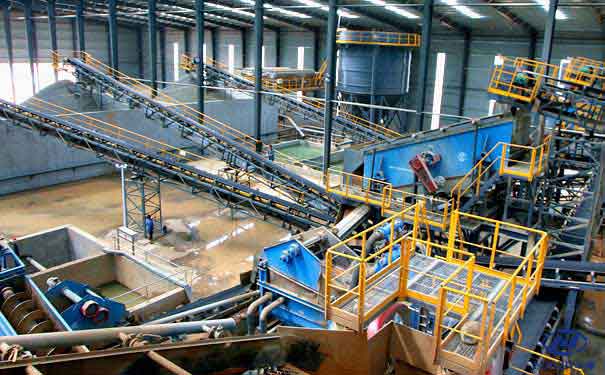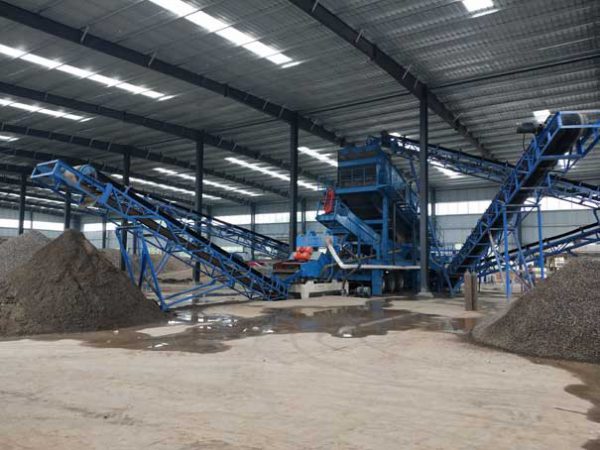With the fierce development of infrastructure construction, the demand for sand and gravel aggregates continues to increase, and the supply of natural sand is insufficient, and machine-made sand fills this vacancy. The complete set of equipment for the machine-made sand and gravel production line usually includes crushers, sand making machines, vibration equipment, ancillary equipment, etc. Although there are many sources of machine-made sand, and raw materials such as tailings and construction waste are in line with the resource recycling policy, care should be taken to avoid pollution during the processing. How can the sand and gravel plant achieve environmentally friendly production? Here is an introduction for everyone.

How to achieve environmentally friendly production in sand and gravel plants?
- Closed production (a large degree of green environmental protection can be achieved.)
(1) The installation of multi-effect dust removal equipment is necessary. At the same time, the production line adopts a partially enclosed design and adopts a dust cover to collect the generated dust, which can reduce dust pollution to a large extent;
(2) The closed board room design can significantly reduce noise pollution and realize one of the important conditions for environmental protection of the sand and gravel production line. - The gravel crushing equipment is normal, the production line already exists, there is no closed workshop, and no environmental protection measures.
If the sand and gravel plant is built for a period of time and all the functions of the equipment are normal, but there are no environmental protection measures, a set of environmentally friendly production plans will be designed on the basis of the original production line.
(1) Environmental protection auxiliary equipment: equipped with dust collector or sprayer to remove dust, transportation equipment and screening equipment can be covered with sheds as required, and pollution is controlled within a small range, in line with national sand making standards.
(2) Noise control: For areas with strict noise decibel control, closed workshops can be built, and shielding devices or muffler devices can be added to effectively avoid noise pollution.
(3) Wastewater and sludge: In the process of sand washing, machine sand can be built into a sewage sedimentation tank, sand washing wastewater can be recycled, and the sediment sludge and waste soil can also be used for the reclamation of the mine cushion, and the clear water of the sedimentation tank can be used continue to be used for sand washing.

The sand and gravel factory mainly crushes large stones into standard construction sand and gravel. What machine is used to beat the gravel? Specifically, it is necessary to combine the actual output, the size of the feed material; the specifications of the finished product, the work site conditions, etc., to scientifically and reasonably match, so that the equipment in each link can give full play to the value and create higher returns. The following introduces common configuration schemes;
Processing brittle and soft stones: feeder + jaw crusher + impact crusher + vibrating screen + conveyor;
Hard stone can be processed: feeder + jaw crusher + cone crusher + vibrating screen + conveyor;
One-time forming: feeder + hammer crusher+ vibrating screen + conveyor;
Multi-stage crushing and sand making: feeder + jaw crusher + impact crusher/cone crusher + sand making machine + vibrating screen + conveyor;
Mobile: mobile jaw crusher + mobile impact crusher/cone crusher;

